
STRAHLENTHERAPIE UND ONKOLOGIE
Scope & Guideline
Empowering professionals with cutting-edge insights.
Introduction
Aims and Scopes
- Radiotherapy Techniques and Innovations:
The journal consistently publishes research on novel radiotherapy techniques, including intensity-modulated radiotherapy (IMRT), stereotactic body radiotherapy (SBRT), and proton therapy, highlighting advancements that improve treatment precision and patient outcomes. - Clinical Outcomes and Toxicity Management:
A significant focus is placed on clinical studies that evaluate the effectiveness of various treatment regimens, including chemoradiotherapy, and their associated toxicities, with an emphasis on optimizing patient care and quality of life. - Personalized and Adaptive Radiotherapy:
Research exploring personalized treatment approaches, including the use of AI in treatment planning and adaptive radiotherapy techniques, is a core area of interest, addressing the need for tailored therapies based on individual patient characteristics. - Integration of Imaging and Radiomics:
The journal highlights the role of advanced imaging techniques, such as PET/CT and MRI, along with radiomics, in predicting treatment responses and outcomes, illustrating the growing intersection between imaging and radiotherapy. - Multidisciplinary Approaches and Patient-Centered Care:
Emphasizing the importance of a multidisciplinary approach, the journal features studies that integrate insights from various specialties, including oncology, surgery, and palliative care, to enhance patient management and treatment strategies.
Trending and Emerging
- Artificial Intelligence and Machine Learning:
There is a growing trend towards the application of AI and machine learning techniques in radiation therapy, from treatment planning to predictive modeling, enhancing precision and efficiency in patient management. - Immunotherapy and Radiotherapy Combinations:
Research exploring the synergistic effects of combining immunotherapy with radiotherapy is on the rise, reflecting a shift towards integrated treatment strategies that optimize clinical outcomes for cancer patients. - Patient-Centered Approaches and Quality of Life Assessments:
Increasing attention is being paid to patient-reported outcomes and quality of life assessments in treatment protocols, emphasizing the importance of patient perspectives and experiences in oncology care. - Real-World Data and Comparative Effectiveness Research:
There is a notable trend towards utilizing real-world data to assess treatment effectiveness and safety, providing insights that complement clinical trial findings and inform clinical practice. - Sustainability and Cost-Effectiveness in Oncology:
Emerging themes around sustainability in radiation oncology practices and the evaluation of cost-effectiveness of various treatment modalities are gaining traction, reflecting broader healthcare priorities.
Declining or Waning
- Traditional Radiation Techniques:
There is a noticeable decline in studies focusing solely on conventional radiation therapy methods without the integration of advanced technologies or personalized approaches, as the field shifts towards more innovative and tailored treatment strategies. - Descriptive Studies without Clinical Application:
Research that is primarily descriptive and lacks direct clinical application or implications seems to be decreasing, as the journal increasingly favors studies that demonstrate practical outcomes and advancements in patient care. - Longitudinal Studies on Historical Data:
The emphasis on historical data analysis and retrospective studies without new insights or technological advancements appears to be waning, with a greater focus now on contemporary clinical trials and innovative methodologies.
Similar Journals
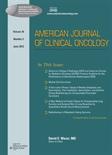
AMERICAN JOURNAL OF CLINICAL ONCOLOGY-CANCER CLINICAL TRIALS
Elevating Cancer Research to New HeightsAMERICAN JOURNAL OF CLINICAL ONCOLOGY-CANCER CLINICAL TRIALS, published by Lippincott Williams & Wilkins, is a pivotal journal in the fields of oncology and cancer research, focusing on the latest advancements in clinical trials and therapeutic strategies for cancer management. With an ISSN of 0277-3732 and an E-ISSN of 1537-453X, this journal serves as an essential resource for the dissemination of high-quality research findings, scholarly reviews, and innovative methodologies, aiming to advance clinical oncology from 1982 to 2024. It is categorized in Q3 for Cancer Research and Q2 for Oncology, reflecting its significant role in the scientific community. In addition to its rigorous peer-reviewed content, the journal provides a platform for researchers and clinicians to share valuable insights, laying the groundwork for future breakthroughs in cancer treatment. Although it currently does not offer open-access options, the journal remains accessible to a wide audience through academic institutions and libraries. The AMERICAN JOURNAL OF CLINICAL ONCOLOGY is crucial for anyone involved in oncology research, making it a must-read for professionals dedicated to improving cancer care.

Breast Journal
Exploring breakthroughs in breast disease management.The Breast Journal, published by Wiley-Hindawi, is a distinguished Open Access journal dedicated to the fields of internal medicine, oncology, and surgery with a particular focus on breast health and disease. Since its inception in 1995, the journal has become an essential resource for researchers and clinicians, facilitating the dissemination of high-quality research and innovative clinical practices. With an impact factor reflecting robust scholarly influence and a ranking in the Q3 quartile for both internal medicine and oncology, as well as Q2 in surgery, it showcases significant contributions that advance knowledge and improve patient outcomes. Offering unparalleled access to its articles, The Breast Journal aims to support a global audience in exploring the multifaceted challenges and breakthroughs in breast-related health, making it a vital platform for shared learning and scientific discourse.
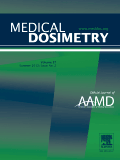
Medical Dosimetry
Bridging Theory and Practice in DosimetryMedical Dosimetry is a distinguished journal published by Elsevier Science Inc, dedicated to the advancing field of medical dosimetry and its applications within oncology, radiology, and nuclear medicine. With its ISSN 0958-3947 and E-ISSN 1873-4022, this journal serves as a crucial resource for researchers and professionals aiming to enhance their understanding of radiation treatment planning and dosage calculations. Encompassing a comprehensive range of topics from clinical dosimetry to technology assessment, Medical Dosimetry has been disseminating significant findings since its establishment in 1988, contributing to the continuous development of best practices in patient care and safety. The journal currently holds a Q3 ranking in various categories, reflecting its pivotal role in the research community, while not currently offering open access, it remains an essential reference for scholars advancing the techniques utilized in medical imaging and treatment. By fostering a platform for high-quality research, it aims to bridge the gap between theoretical studies and clinical applications, making it a vital addition to any medical library.
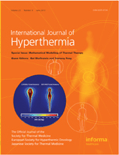
INTERNATIONAL JOURNAL OF HYPERTHERMIA
Innovating treatment through the power of heat.INTERNATIONAL JOURNAL OF HYPERTHERMIA, published by Taylor & Francis Ltd, is a leading peer-reviewed journal dedicated to advancing the field of hyperthermia and its applications in medical science, particularly within cancer research and related disciplines. With an ISSN of 0265-6736 and an E-ISSN of 1464-5157, this journal has been a vital resource since its establishment in 1985, offering a platform for innovative research and clinical applications aimed at improving treatment outcomes. The journal is recognized with a Q2 category ranking in several fields, including Cancer Research and Physiological Medicine, reflecting its significant contribution to scientific knowledge and clinical practices. Furthermore, it has been Open Access since 2019, ensuring that cutting-edge research is accessible to a global audience. By facilitating the exchange of ideas and fostering collaborations among researchers, professionals, and students, the INTERNATIONAL JOURNAL OF HYPERTHERMIA serves as an essential resource in the quest to exploit hyperthermia’s full potential in therapeutic settings.

Journal of Radiosurgery and SBRT
Bridging Science and Practice in SBRTJournal of Radiosurgery and SBRT is a dedicated platform for advancing the field of radiosurgery and stereotactic body radiation therapy (SBRT), published by OLD CITY PUBLISHING INC. With its ISSN 2156-4639 and E-ISSN 2156-4647, this journal serves researchers and practitioners keen on the latest findings and methodologies in the domains of radiological technology and surgical oncology. Operating from Spain, the journal has established itself within notable quartiles, ranking Q3 in 2023 across categories including Radiological and Ultrasound Technology, Radiology, Nuclear Medicine and Imaging, and Surgery. The journal is indexed in Scopus, with rankings that place it at #311 in Medicine Surgery and #232 in Medicine Radiology categories, reflecting its significance in the academic community. Although it does not currently offer an open-access model, the Journal of Radiosurgery and SBRT aims to foster innovation and collaboration, making it an essential resource for those involved in cutting-edge research and clinical practice in radiosurgery.
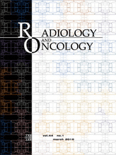
Radiology and Oncology
Bridging gaps in radiology and oncology for a healthier tomorrow.Radiology and Oncology is a prominent open access journal that has been instrumental in advancing the fields of radiology and oncology since its inception in 1992. Published by SCIENDO in Germany, this journal aims to disseminate high-quality research articles, reviews, and case studies that address critical issues in diagnostic imaging and cancer treatment. As of 2023, it holds a commendable impact factor within the Q2 category for Radiology, Nuclear Medicine, and Imaging, and a Q3 standing in the field of Oncology—reflecting its importance in these critical areas of medicine. With a focus on promoting innovative research and interdisciplinary collaboration, Radiology and Oncology is indexed in Scopus, where it ranks #122 among 333 in its category and #187 among 404 in Oncology, showcasing its wide-reaching impact and relevance. The journal is fully open access since 2007, ensuring that vital research is accessible to the global medical community and fostering advancements in patient care strategies and therapeutic methodologies. By providing a platform for the latest developments and discoveries, Radiology and Oncology is a pivotal resource for researchers, clinicians, and students dedicated to improving outcomes in cancer care through innovative imaging techniques.

Turk Onkoloji Dergisi-Turkish Journal of Oncology
Shaping the future of oncology with dedicated research and expertise.Turk Onkoloji Dergisi - Turkish Journal of Oncology, published by KARE PUBL, serves as a vital platform in the field of oncology, specifically catering to the Turkish-speaking research community and contributing to global discourse. With an ISSN of 1300-7467, this journal, which has been in circulation since 2007 and continues until 2024, recognizes the importance of advancing medical knowledge in cancer research through rigorous peer-reviewed articles. Although currently positioned in the Q4 category of oncology journals with a Scopus rank of #344 out of 404, the journal is dedicated to fostering significant research insights and innovative perspectives on cancer treatment and prevention. While it does not currently offer open access, its content is essential for professionals, researchers, and students aiming to enhance their understanding of oncology developments in Turkey and beyond. The Turkish Journal of Oncology not only aspires to improve the quality of cancer care but also strives to enhance collaboration among researchers, thereby influencing future oncology practices.

Onkologija
Advancing cancer research for a healthier tomorrow.Onkologija is a distinguished open-access journal dedicated to the field of oncology, published by the Institute of Oncology Ljubljana. With its ISSN 1408-1741 and E-ISSN 1581-3215, this journal has become a crucial platform for researchers and healthcare professionals since its transition to open-access in 2008, allowing widespread dissemination of critical findings and innovations in cancer research and treatment. Located in Ljubljana, Slovenia, the journal aims to bridge the gap between clinical practice and research by publishing high-quality original articles, reviews, and case studies that address pivotal issues in oncology. Although specific metrics such as HIndex and Scopus ranks are currently unavailable, Onkologija’s commitment to advancing oncology knowledge is evident in its engaging publications that attract a diverse readership, making it an essential resource for anyone invested in the battle against cancer.

International Journal of Radiation Research
Exploring the Frontiers of Nuclear Medicine ResearchThe International Journal of Radiation Research, published by the IJRR-IRANIAN JOURNAL RADIATION RES, serves as a critical platform for researchers and professionals in the fields of radiology, nuclear medicine, and imaging technology. Since its inception in 2003, this peer-reviewed, open-access journal has focused on disseminating significant findings and advancements, contributing to the global discourse on radiation research. With an ISSN of 2322-3243, the journal offers valuable insights into emerging technologies and methodologies, maintaining a commitment to enhancing the understanding and application of radiation in medical science. Although currently positioned in the Q4 category across its scopes, the journal strives to elevate its impact by promoting high-quality research and innovative practices. The journal is accessible to a wide audience and encourages submissions from scholars worldwide, directly supporting the advancement of knowledge in radiological and ultrasound technology. For those seeking to explore and contribute to this dynamic field, the International Journal of Radiation Research represents an invaluable resource.
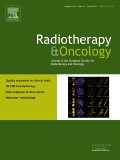
RADIOTHERAPY AND ONCOLOGY
Advancing cancer care through groundbreaking research.Radiotherapy and Oncology is a leading peer-reviewed journal published by Elsevier Ireland Ltd, focusing on the vital fields of hematology, oncology, and radiology. With an impressive impact factor and ranking in the top quartiles (Q1) of its categories as of 2023, it is recognized for disseminating high-quality research that contributes significantly to advancements in cancer treatment and patient care. The journal, which has been in circulation since 1983, aims to provide a platform for original research articles, reviews, and clinical studies that explore the latest innovations in radiotherapeutic technologies and oncology practices. This journal is essential for researchers, healthcare professionals, and students who are dedicated to improving cancer therapies and outcomes. Although it does not offer open access, the wealth of information contained within its pages supports continued education and development in these crucial medical fields.